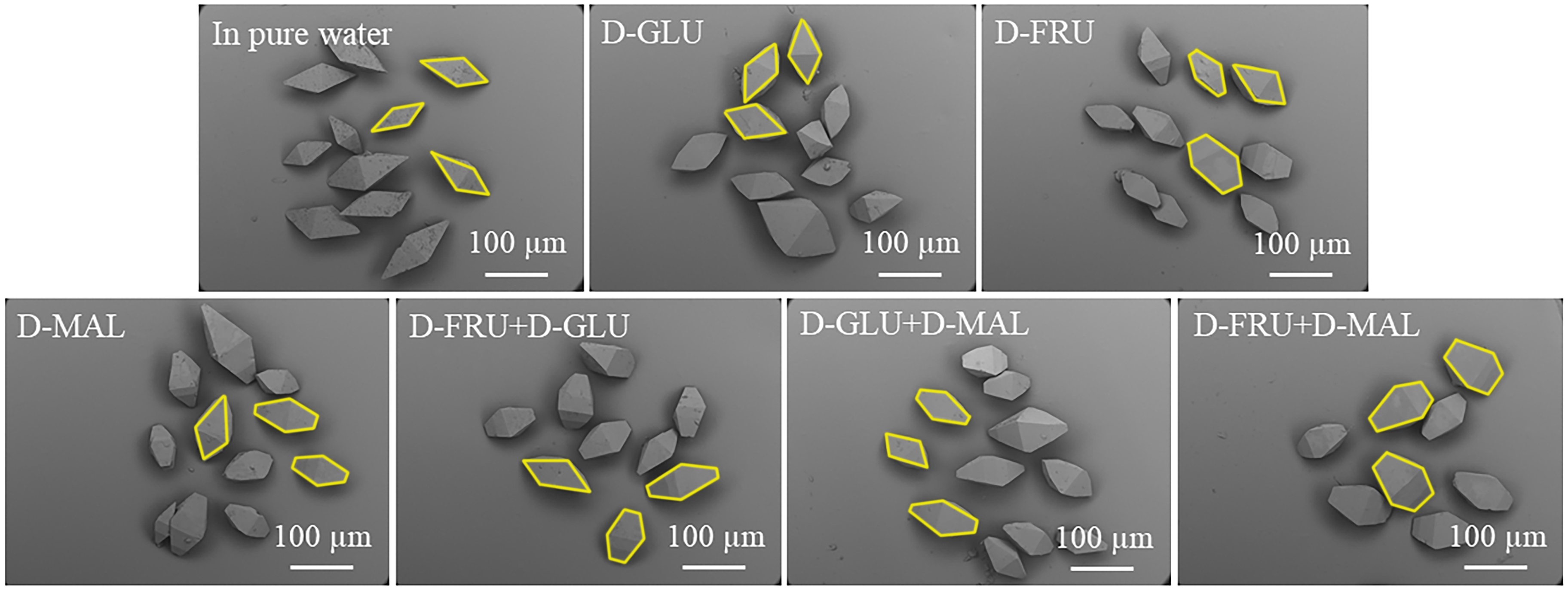(29l) Uncovering the Role of Impurity Sugars on the Crystallization of D-Tagatose Crystal: Experiments and Molecular Dynamics
AIChE Annual Meeting
2023
2023 AIChE Annual Meeting
Food, Pharmaceutical & Bioengineering Division
Poster session: Food and Bioprocess Engineering
Monday, November 6, 2023 - 3:30pm to 5:00pm
Impurity sugars produced in upstream process of functional sugars are significantly impacting the product quality. D-tagatose (D-TAG) is an emerging functional sugar with good prebiotic properties and is used broadly in food and medicine. It is generally prepared from galactose by chemical or biotransformation isomerization reactions, in which impurities such as D-fructose (D-FRU) and D-maltose (D-MAL) are produced, thus affecting the downstream process, especially for the crystallization process of D-TAG [1]. In this work, the effect of congeners (D-MAL, D-FRU, D-glucose (D-GLU)) on primary and secondary nucleation of D-TAG crystals was investigated (Figure 1). Interestingly, impurity sugars showed an inhibition on primary nucleation of D-TAG crystals, while a promotion on the secondary nucleation of D-TAG. The order of inhibitory ability for primary nucleation was D-FRU+D-MAL > D-GLU+D-MAL > D-FRU > D-GLU > water, while the sequence for secondary nucleation was reversed. The diffusion ability, hydrogen bond formation ability and interaction energy of D-TAG crystal surface and impurity sugars were evaluated by molecular dynamics (MD) simulations to reveal these nucleation and growth behaviors. At the molecular level, it was explained that the congeners affect the nucleation ability by hindering the diffusion of D-TAG molecules [2]. On the other hand, the adsorption energy of the D-TAG surface was calculated by constructing MD simulation system, and the results showed that the adsorption of impurity sugars on the D-TAG crystal surface hindered the growth of D-TAG crystals. Moreover, crystallization experiments were designed, and D-TAG crystals with uniform particle size distribution and regular morphology were obtained by control the concentration and types of the impurity sugars. This study helps to understand the effect of impurity sugars on crystallization and guide the industrial production of functional sugars.
Figure 1. SEM images of D-TAG crystals in the absence and presence of impurity sugars.
References
- Ma, W., Lutsko, J. F., Rimer, J. D., & Vekilov, P. G. Nature. 2020, 577(7791), 497-501.
- Grimme, S., Antony, J., Ehrlich, S., & Krieg, H. J Chem Phys. 2010, 132(15), 154104.

